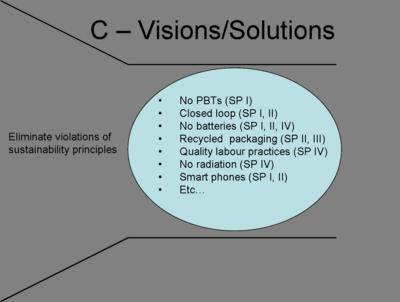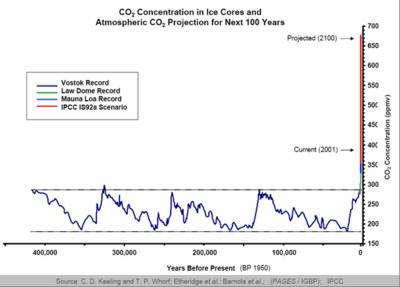
...So I’m due for some “success stories” – some feel good stuff about how businesses are profiting from sustainable initiatives and inspiring their employees and everyone “doing well while doing good.” I think I’ve sort of taken for granted that people know about some of the stuff that is going on, because it is these types of stories that have kept me going in this field and brought me to this program. There are a slew of stand-up companies doing good things at different levels of course. But the ones that have really internalized the true concept of sustainability – defined on the principle level – are fewer, but more exciting. They are invigorated and creative organizations. The big ones that come to mind are Interface, Scandic Hotels, Electrolux, and IKEA. The last three had great success after working with The Natural Step, and Interface’s CEO, Ray Anderson picked up the concepts from Paul Hawkin’s The Ecology of Commerce.
I’ll get to a lot of the success stories but just start with a bit about Interface, because we just watched a documentary called The Corporation, which Anderson was in a few times (please go rent that movie by the way, it’s long and a bit heavy, but entertaining, so important and worth the watch). So, basically, Interface is an old carpet company (
And carpets wear out rather quickly, in the scheme of things – how long does it take for a carpet to start looking dingy in the places it gets walked on all the time? Like 5 years, maybe? And they can go out of style quickly. I have no idea the average active use of a carpet, I’m sure it varies, but I’d think you can see when a carpet is 10 years old, and it’s usually not a very hot look. Office remodels and new tenants moving into spaces wanting their own look and a fresh start are pretty common events. So this all adds to a lot of turn over, a lot of resource use in the carpets, energy in production, and heaps of carpets in landfills (with all those toxins, etc not disappearing (1st law of thermodynamics) and dissipating into the biosphere (2nd l.o.t.).
So in the early 90s (or thereabouts) some customers started asking about the company’s environmental policy, and they didn’t have one, and the employees started a task force to deal with it and asked Anderson to come give a speech at the task force kick off to the members (employees from the company’s operations around the world). And he didn’t really want to do it, because the company didn’t have an environmental policy or vision or any concept really of its role in the biosphere. And that’s when he found The Ecology of Commerce in a desperate search for guidance, and was really struck by the concepts.
He’s since revolutionized the carpet industry and his company. They’ve shifted their entire operational paradigm from “selling carpets” to “providing the service of comfortable, attractive flooring.” Essentially they lease carpeting to companies. That way Interface has the incentive to build long-lasting, durable, high quality carpets, because they own them. They have the incentive to minimize waste of the carpets. So they’ve done things like creating carpet tiles that cover a whole room, but when the high traffic areas get warn out, they replace those tiles, instead of the whole room, saving them a lot of money. Because they now have the incentive to bring back the warn out parts and refurbish/reuse the materials, they don’t want them full of toxic compounds that are hazardous, difficult to separate, and generally hard to deal with – things that really weren’t any of their concern under the previous model where they washed their hands of it the minute they left the factory.
And as you can imagine, when those incentives are there, the innovations follow (like the tile-carpets). They’ve also brought in emerging experts to help them with developing safer alternatives in terms of dyes and adhesives – natural alternatives, or chemicals that are safer and more easily managed in closed loops, less persistent, etc. I know they’ve done some work with Bill McDonough’s (author of Cradle to Cradle, and another
I think the real key here though, beyond the significant cost savings and opportunities to improve margins through the new model, is the huge revolutionary and exciting change that the culture of that company must have gone through, and is still going through. I mean, how often do you hear in management and business literature about the importance of corporate culture, core-values, and clear, shared vision? In most businesses labor is the huge cost factor, far outweighing all of the physical and material inputs. And can you imagine how exciting and rewarding it must be to work for a company who’s goal is “sustainability by 2020”? The improved productivity, the innovation that this approach has sparked at the company and in the industry as a whole must be immeasurable… [I apologize for not doing more research on the facts and stats of the story, but you get the idea (and a google search on any combination of “Interface, sustainability, success” etc will pull up a ton of info on their story).]
And that brings me to a point I’ve been meaning to make for a long time. A lot of very supportive friends have asked me half in jest, when I’m going to figure out things like how we can have wind power without killing birds, how to get the water out of New Orleans, when I’m going to hire them at my futuristic sustainable business, how long it’s going to take me to structure the new-world-economic-order, etc etc… Well, as much as I like to fantasize that I am, I think we all know, that I’m not nearly smart enough to do any of that. But what I’m hoping I can do on some level is lay-out the current problems that we face as a species, along with a simple, shared framework that we can all agree on, to enough people that they can then use that perspective, and those tools to save us. It’s going to be those CEOs that inspire those middle-managers and engineers and designers that save the world. It’s going to be anyone who reads this and starts applying it to their lives, to their organizations that their involved with (employers, local governments, schools, whatever) that really makes this possible. And the beauty of it is, that once that leap is made, that confrontation with the reality of our situation (the funnel, if you like) and the shared, scientifically irrefutable framework for success (the 4 principles) are understood, the possibilities for solutions are limitless. The potential for creativity in working together to conquer this challenge, the artistry that will get us there, is just incredibly exciting.
… As I said, we’re moving on to a leadership and organization learning module of the course, and it’s really exciting, powerful stuff (and of course, as usual, daunting, overwhelming and challenging). Tomorrow we’ve got lectures from David Cook – head of TNS in the






